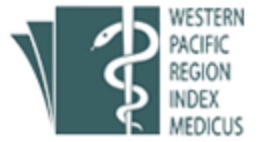Validating Fibula Length as a Reliable Estimator for Femoral Nail Length: A Comparative Analysis with the Standard AO Method
DOI:
https://doi.org/10.31436/imjm.v24i01.2485Keywords:
Femoral length, fibula length, femoral shaft fracture, intramedullary nailAbstract
INTRODUCTION: An appropriate femoral nail length is required to be measured preoperatively to ensure optimal surgical outcomes. Conventionally, measurements are obtained clinically or radiographically on the contralateral femur or by using forearm referencing. This study is aimed to determine whether fibula length can be used as an additional clinical method for estimating maximum femoral nail length. MATERIALS AND METHOD: This study involves measuring the femurs and fibulas of 140 patients using a standard tape measure. Femur length is measured adhering to the standard Arbeitsgemeinschaft für Osteosynthesefragen (AO) method, while fibula length was measured from the tip of the fibula head to the tip of the lateral malleolus. Pearson correlation coefficient (r) determines any correlation between the two measurements. RESULTS: The overall mean femoral length was 37.98cm (SD=2.72), with a range of 32.0 to 46.5 cm, and the mean fibula length was 37.72cm (SD=2.61), with a range of 32.4 to 47.0 cm. A robust and positive correlation (r=0.940, p<0.001) was observed between fibula length and femoral length. Age, body mass index, and gender did not affect this correlation. Both inter-observer and intra-observer reliabilities were high. A formula for estimating maximum femoral nail length was derived from the correlation graph: femoral nail length = 1 + (0.98 x fibula length). CONCLUSION: Fibula length demonstrates a strong correlation with femoral length, offering a reliable alternative clinical method for estimating femoral nail length. This method proves particularly useful in cases of bilateral femoral fractures with concurrent forearm fractures where forearm referencing method is impractical.
Downloads
Downloads
Published
How to Cite
Issue
Section
License
All material submitted for publication is assumed to be submitted exclusively to the IIUM Medical Journal Malaysia (IMJM) unless the contrary is stated. Manuscript decisions are based on a double-blinded peer review process. The Editor retains the right to determine the style and if necessary, edit and shorten any material accepted for publication.
IMJM retain copyright to all the articles published in the journal. All final ‘proof’ submissions must be accompanied by a completed Copyright Assignment Form, duly signed by all authors. The author(s) or copyright owner(s) irrevocably grant(s) to any third party, in advance and in perpetuity, the right to use, reproduce or disseminate the research article in its entirety or in part, in any format or medium, provided that no substantive errors are introduced in the process, proper attribution of authorship and correct citation details are given, and that the bibliographic details are not changed. If the article is reproduced or disseminated in part, this must be clearly and unequivocally indicated.










